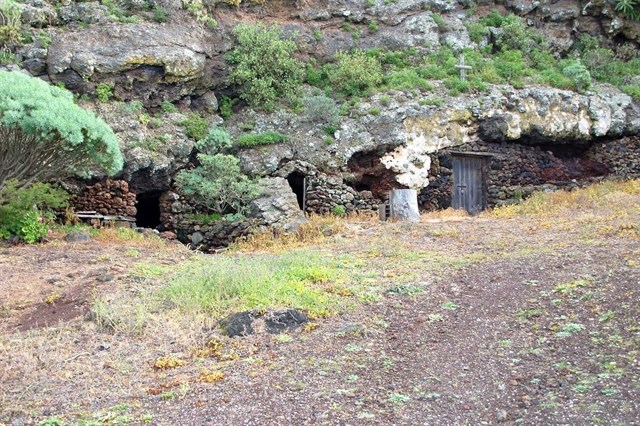 Caracol Cave
Caracol Cave
The cave complex near Ermita Virgen de los Reyes was formerly inhabited by shepherds working in these areas. It is a very important place for the inhabitants of the island, because here since January 1546 r. the statue of the Virgen de los Reyes was kept until the chapel was built.
Meridian Island
From the 2nd century on, when the Greek cartographer Ptolemy considered Punta de Orchilla as a reference point for drawing maps and making geographic calculations, was considered, that the prime meridian runs through the westernmost point of El Hierro (Zero Meridian). Unfortunately, w 1884 r., after making careful calculations, to the indignation of the people of El Hierro, the meridian was moved to Greenwich, UK. In memory of the old days, El Hierro is still sometimes called the Meridian Island (Meridian Island).
The Sabinar
The Spanish word sabina means juniper, while sabinar refers to the juniper forest, which the western part of the island is covered with. However, it is not an ordinary forest – the plants, under the influence of strong northeastern winds, leaned towards the ground and became surprising, twisted forms. Looking at the characteristic "tormented trees", one can get an impression, that they have lost the fight against the wind, but nothing more wrong - measuring 12 m junipers have been constantly resisting the forces of nature for over a thousand years. Junipers are under protection, so keep in mind, that collecting wood while visiting El Sabinar is prohibited.
Los Bascos viewpoint
From the vantage point on high 800 m, with the mysterious name Mirador de los Bascos, offers one of the most spectacular views of El Golfo, with the white houses of Sabinosa in the foreground and Roques de Salmor in the background. A trip to Mirador de los Bascos must be planned on a clear day, because he is often shrouded in clouds.
Orchilla Lighthouse
Faro de Orchilla is a lighthouse built on the westernmost point of El Hierro, archipelago, Spain and Europe, called Punta de Orchilla or Cabo de Orchilla. For centuries it was considered, that this is where the prime meridian runs. Lighthouse, built in 1933 r. it is currently completely automated and unfortunately, closed to visitors. However, everyone, who will reach the feet of the Faro de Orchilla, can obtain a decorative certificate for a small fee at the Valverde Tourist Information Office that they have crossed the Prime Meridian. There are three noteworthy monuments in the vicinity of the lighthouse: the first is erected in 1989 r. Zero Meridn Monument, commemorating the former function of this place; the second is a small white marble monument, placed in memory of the first lighthouse keeper from Faro de Orchilla – Carmelo Heredii Olmosa; the third is a simple wooden cross, Emigrant's Cross, commemorating emigrants from the island, which the light of the lantern erected among the volcanoes bade farewell. Faro de Orchilla can be reached from the north or the east; in both cases, turn off the main road into a narrow and winding asphalt road. After a dozen or so meters, asphalt turns into gravel, rough road. Persons, who decide to rent a car, they will probably be instructed, that Faro de la Orchilla cannot be reached. This is not true – can be reached, however, you must drive slowly and carefully, and after returning it is necessary to wash the vehicle.
Orchilla Pier
A few hundred meters east of the lighthouse is the small stone pier of the Embarcadero de Orchilla. In the past, from this place, under the cover of night, the herrenos traveled to South America in search of happiness and bread. Currently, a natural swimming pool with seawater dominates here; there is also a picnic area.